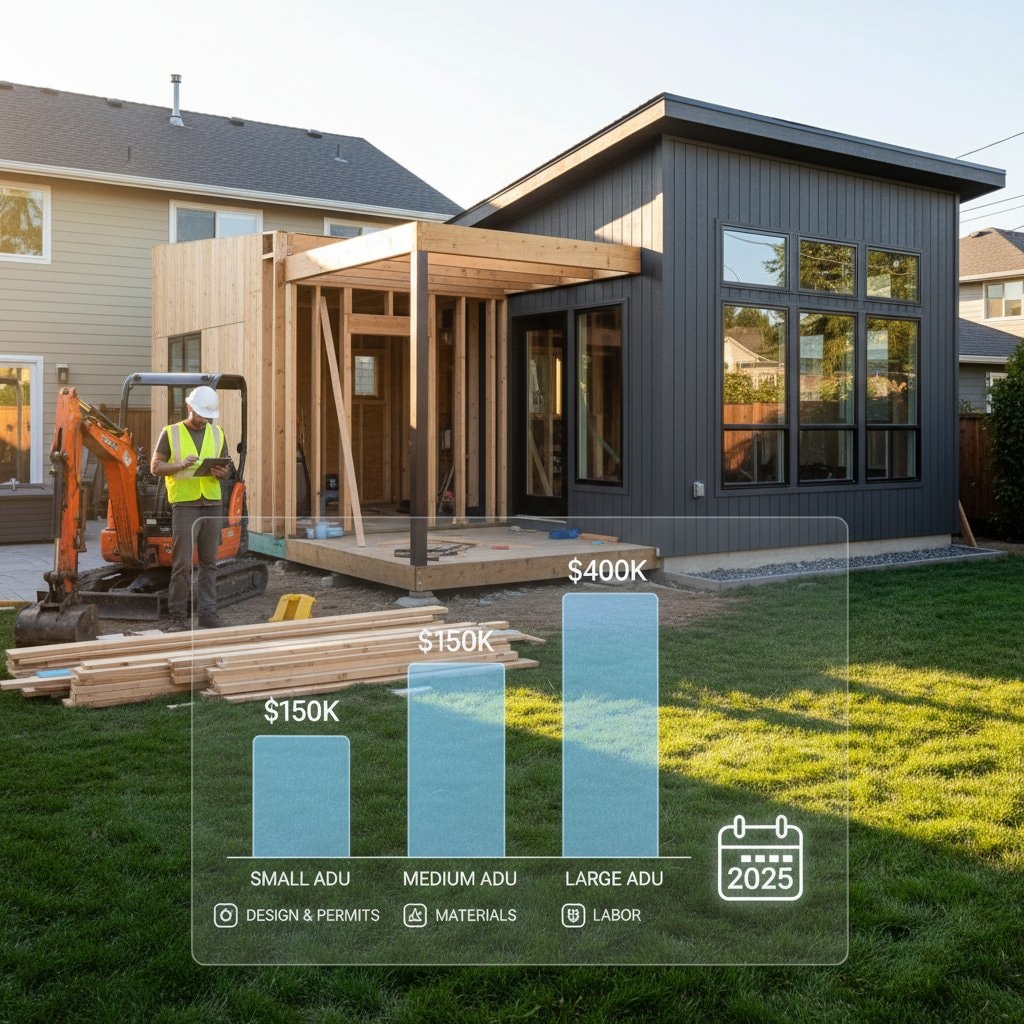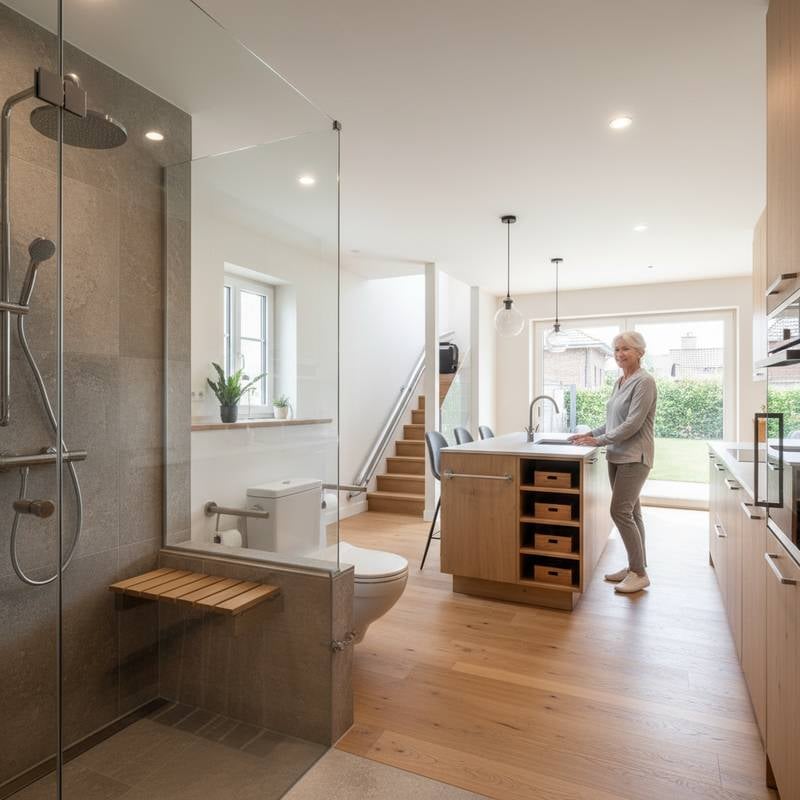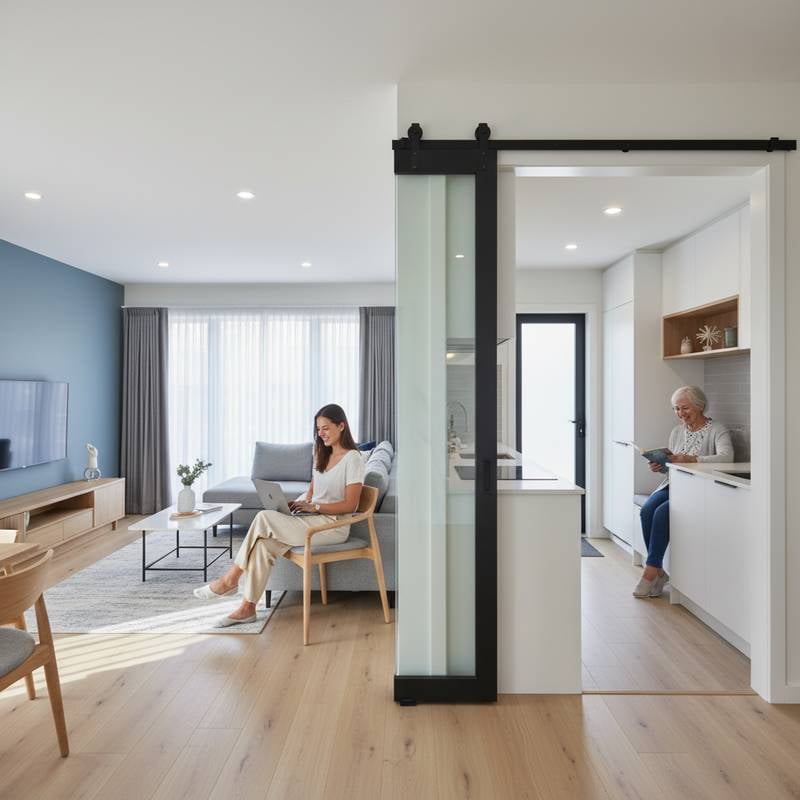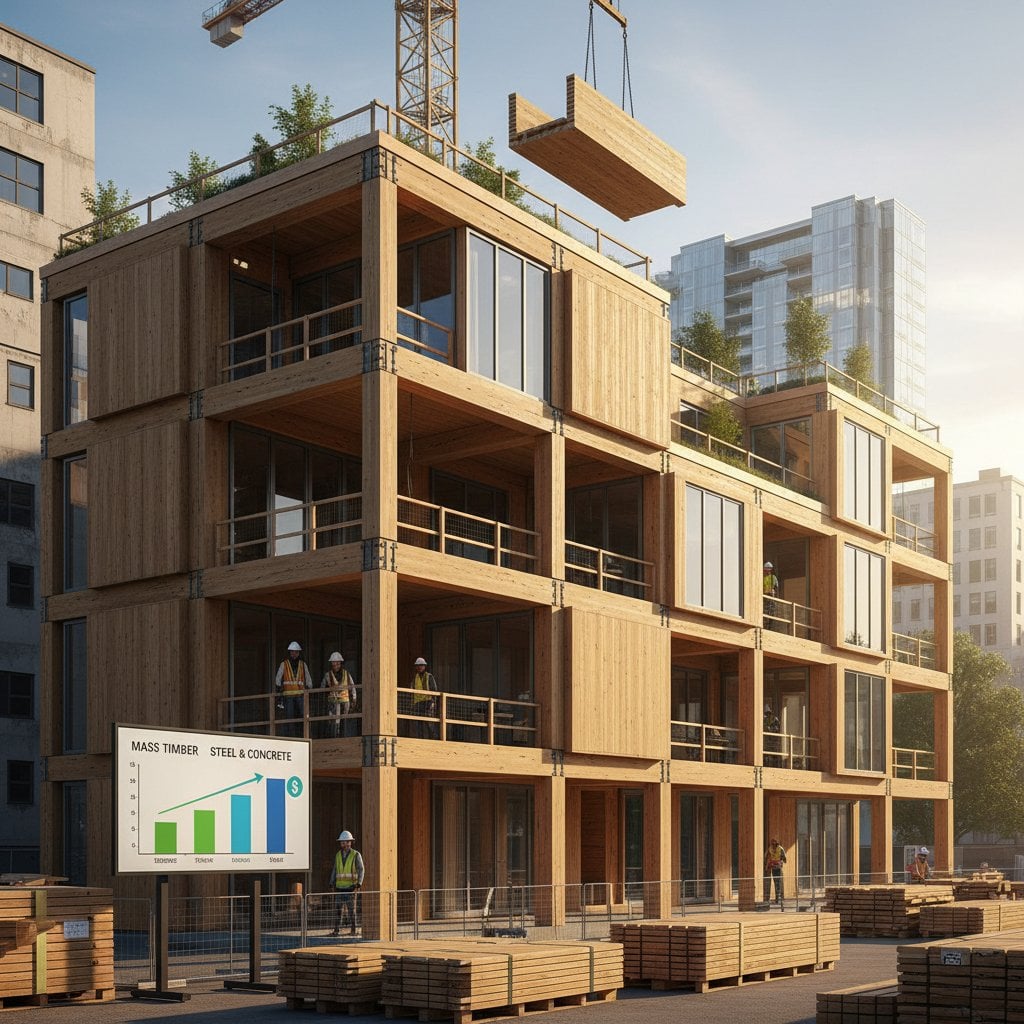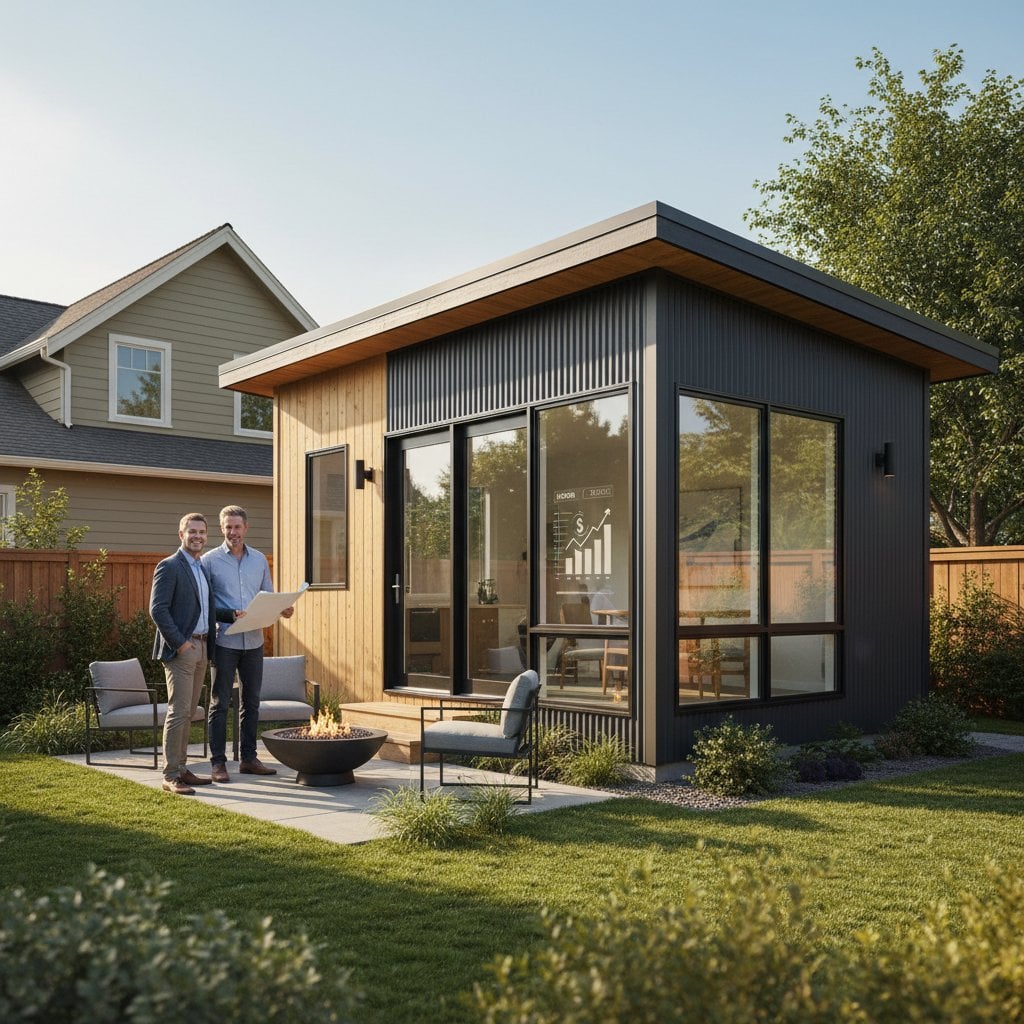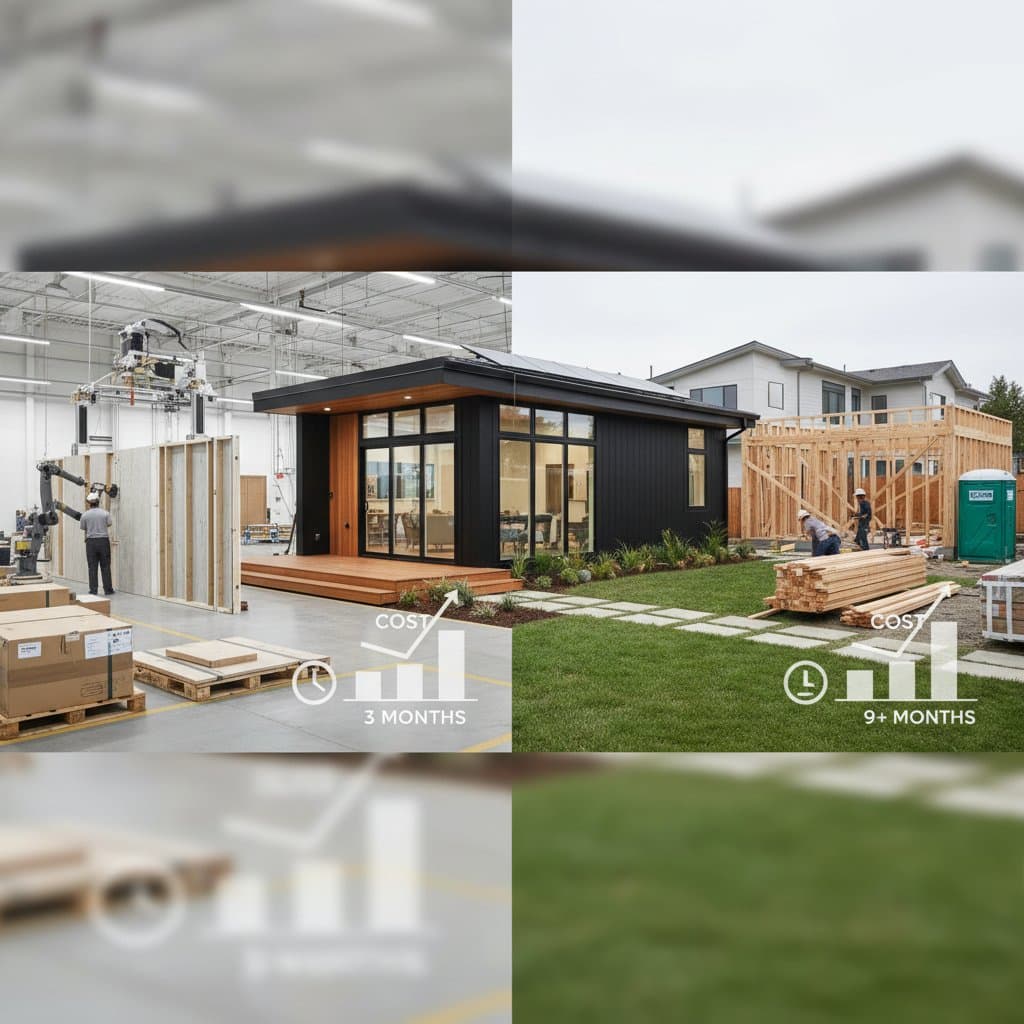2025 ADU Cost Breakdown: Essential Budget Insights
Adding an accessory dwelling unit, often called an ADU, increases property value and provides flexible living space. Whether known as a backyard cottage, granny flat, or guest house, understanding true construction costs enables realistic budgeting before the project begins.
Quick Cost Summary
The typical cost to build an ADU ranges from $150,000 to $400,000, with an average of $250,000. Small detached units start near $100,000, while larger or customized builds exceed $450,000.
Major cost drivers include the size and layout of the ADU, the construction type such as garage conversion, attached addition, or detached structure, material quality and finish level, labor and design expenses, and site preparation and utility connections.
Highlights and Key Insights
Detached ADUs usually cost more than garage conversions due to additional foundation and utility work. Utility connection fees reach several thousand dollars in many areas. Prefabricated or modular ADUs reduce construction time and labor costs, although site preparation and permits add significant expense.
Local zoning laws, soil conditions, and site accessibility influence final pricing. Hiring an experienced contractor avoids hidden costs, delays, and compliance issues.
Cost by Size or Type
ADU pricing scales with square footage, but design complexity and finish quality affect costs as much as size.
| ADU Type | Typical Size | Average Cost | Cost per Square Foot |
|---|---|---|---|
| Garage Conversion | 300–500 sq ft | $90,000–$160,000 | $300–$350 |
| Attached ADU | 400–800 sq ft | $150,000–$250,000 | $325–$400 |
| Detached ADU | 500–1,000 sq ft | $200,000–$400,000 | $350–$450 |
| Prefabricated ADU | 400–800 sq ft | $120,000–$220,000 | $275–$325 |
Smaller ADUs cost more per square foot because fixed expenses like plumbing, electrical systems, and permits remain constant regardless of size. Larger units distribute these costs over more space, lowering the per-square-foot rate.
Contractor Costs and Labor Breakdown
Labor represents nearly half of total construction expenses. Professional contractors allocate costs as follows: project management at 10 to 15 percent of the total, framing and structural work at 15 to 20 percent, electrical, plumbing, and HVAC systems at 20 to 25 percent, interior finishes such as flooring and cabinetry at 15 to 20 percent, and exterior work like roofing and siding at 10 to 15 percent.
Licensed trades ensure adherence to building codes and safety standards. Unlicensed work risks costly re-inspections or fines. Projects with structural modifications or new foundations require professional oversight to meet engineering requirements.
Additional Cost Factors
Several often-overlooked expenses shape the final ADU budget.
Permits and Fees
Building permits, plan reviews, and impact fees total $5,000 to $20,000 based on local regulations. Municipalities impose additional charges for utility connections or school district contributions.
Site Preparation
Grading, excavation, drainage improvements, and foundation installation add $10,000 to $30,000. Sloped terrain or unstable soil elevates these figures through specialized engineering solutions.
Utility Connections
Linking sewer, water, gas, and electrical services costs $5,000 to $25,000. Expenses increase when the ADU site lies distant from existing infrastructure, necessitating extended lines or upgrades.
Design and Engineering
Architectural plans, structural engineering reports, and title searches contribute $3,000 to $15,000. Intricate sites or multi-level designs demand extended planning and expert consultations.
Material Choices
Premium selections like custom cabinetry, imported tile, or advanced energy-efficient windows raise the budget by 20 percent or more. Mid-range options deliver durable quality while controlling expenditures; for instance, select vinyl plank flooring over hardwood to balance aesthetics and affordability.
Ways to Save on ADU Construction
Effective cost management begins during the planning phase. Implement these strategies to minimize expenses without compromising quality.
- Simplify the design with a rectangular layout and basic roofline, which reduces material needs and labor hours compared to irregular shapes.
- Reuse existing structures through garage conversions or additions above garages, eliminating the need for new foundations and extensive framing.
- Standardize materials by choosing readily available sizes for windows, doors, and cabinets, which cuts waste and accelerates procurement.
- Tackle partial DIY elements like painting walls, installing interior trim, or basic landscaping to lower professional labor fees.
- Solicit at least three detailed bids from reputable contractors to compare scopes, identify value opportunities, and negotiate better terms.
- Incorporate future-proofing measures, such as rough-in plumbing or electrical conduits, to avoid higher costs from retrofitting later.
Return on Investment
An ADU enhances property value and supports rental income generation. Resale returns typically range from 60 to 100 percent of construction costs, varying by local market dynamics and location desirability. Monthly rental yields of $1,000 to $3,000 recoup investments through loan offsets or equity accumulation.
Owners utilizing ADUs for family accommodations or downsizing reduce separate housing expenses. Unlike surface-level remodels, ADUs deliver functional square footage that appraisers factor into comprehensive valuations.
DIY vs Hiring a Professional
ADU projects demand coordinated trades and regulatory navigation, often surpassing standard homeowner capabilities.
When DIY Makes Sense
Homeowners handle tasks like painting, applying interior finishes, or simple landscaping to trim costs. A skilled individual might manage a basic garage conversion with minimal structural or utility demands, achieving 20 to 30 percent savings over full contractor services. Account for extended timelines and potential permit hurdles.
When Professionals Are Essential
Opt for licensed contractors on detached or multi-room ADUs to guarantee compliance with zoning, energy efficiency, and structural codes. Experts coordinate subcontractors, oversee inspections, and maintain schedules while providing liability insurance. Although fees elevate the total, professionals mitigate risks and enhance long-term property appeal.
Cost Methodology
This guide draws from national averages derived from contractor estimates, industry cost databases, and homeowner surveys. Actual expenses vary with regional labor rates, material supply chains, and municipal permit frameworks. Estimates presume mid-grade finishes and standard site conditions.
Frequently Asked Questions
How much does a small ADU cost?
A 400-square-foot unit typically ranges from $120,000 to $180,000, influenced by design specifics and site challenges.
Is garage conversion to an ADU feasible?
Garage conversions offer the most budget-friendly path, with costs between $90,000 and $160,000 for full transformations including insulation and utilities.
Are permits required for ADUs?
Virtually all ADUs necessitate building permits. Consult the local planning office for zoning compliance and setback guidelines.
What drives the highest ADU costs?
Utility hookups, foundation construction, and luxury materials represent the primary expense categories.
Do prefabricated ADUs save money compared to site-built?
Prefabs lower labor and timeline costs, but foundation preparation, delivery, and connections maintain substantial outlays.
How long does ADU construction last?
Projects span several months from permitting to inspection sign-off, contingent on design intricacy and contractor workload.
Protecting Your ADU Investment
After completion, treat the ADU with the same diligence as the primary residence. Arrange yearly checks for plumbing integrity, roof condition, and electrical functionality. Preserve exterior surfaces through timely repainting and siding repairs to avert water intrusion.
Record all enhancements and approvals for resale documentation. Beyond added space, a well-executed ADU elevates asset worth, accommodates evolving family needs, and fosters income streams when approached with strategic budgeting and foresight.

